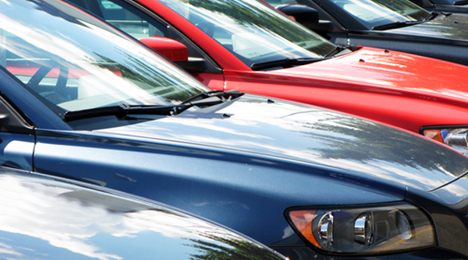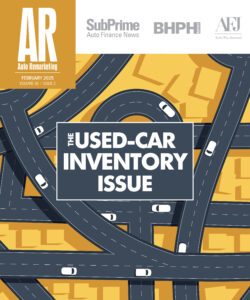Softer used-car margins? Quick turns are key

Franchised dealers have increased their used-car sales for six straight years, according to data from NADA cited in Manheim’s 2016 Used Car Market Report.
But one caveat shouldn’t come as a surprise: Used margins are slimmer.
In fact, the 25 straight quarters (through Q3) of increasing same-store used unit sales for the public dealership groups is paralleled by a period of sliding gross margins that was “almost as long,” Manheim’s report said.
However, franchised dealers’ used-car businesses still churned out record profits, the report noted, citing fast turns, cuts in sales expenses and a healthy dose of F&I income as the fuel.
Additionally, slimmer used margins can be considered “a sign of a competitive industry passing on some of its efficiency gains to consumers.”
The report does note that dealers who haven’t made adjustments could find these margin cuts problematic. So, we asked Cox Automotive chief economist Tom Webb about those dealers who have yet to adopt to narrowing margins; what will they have to do?
For one, dealers will have to move towards a quicker turn of inventory, he said in an interview last week.
“Related to that, you can’t afford to make buying mistakes at auction,” said Webb. “You’re not going to get those big gross deals, because there’s not only been a narrowing, but the bell curve distribution of those grosses, if you would, has actually narrowed quite a bit. Therefore, it’s extremely important not to make mistakes.”
On the sales volume side, the report — citing NADA data — pinpoints used-car sales from franchised dealers on the north side of the 14 million to 15 million range. That follows two years of used sales closer to the 14 million side of that bracket.
“It is, historically, a very stable industry in terms of unit volumes. The margin compression that we had last year on the used-vehicle retail side has become somewhat of a problem,” Webb said. “And it’s one of the reasons for some of the easing in wholesale pricing.
“But again, and in reality, the dealers are relatively agnostic in terms of pricing. It’s the volatility in pricing which can hurt them if it’s extremely severe,” he added. “But since basically they are trading vehicles in a 30- to 40-day trade cycle, it’s really not an issue as it is for our commercial consignors.”
An example of what Webb is referring to can be seen at Asbury Automotive Group. During the retailer’s conference call to discuss its fourth-quarter and full-year results/earnings, management was asked about their outlook on used margins. For full-year 2015, same-store retail used-car gross margins fell from 8.5 percent to 8.0 percent.
“We’re essentially traders. We’re trying to only hold those vehicles for 30 to 35 days. And if we can turn them quickly, where the broader market goes with respect to pricing is not that big of a concern to us,” said Asbury chief executive officer Craig Monaghan.
“The game for us is to get the car, get it reconditioned, get it back on the front line and move it quickly. In some cases, it means getting it to the right store,” Monaghan added. “But if the entire market is moving up and down reasonably slowly or on its normal seasonal trends, where those prices go are less important to us than it is our ability to turn it quickly.”

 View The Latest Edition
View The Latest Edition

